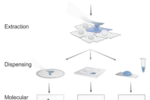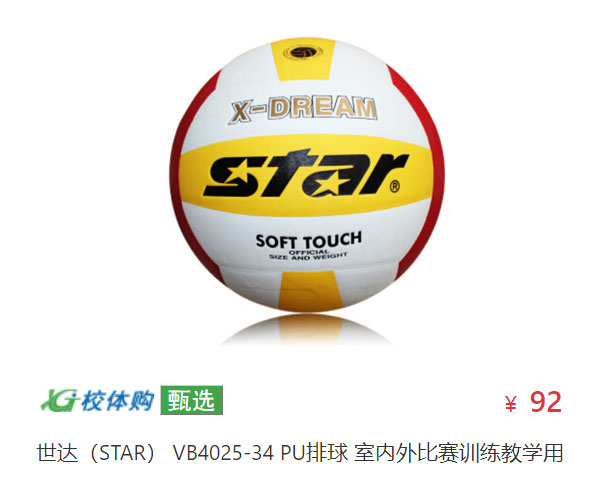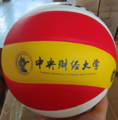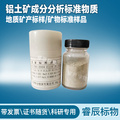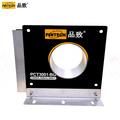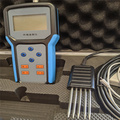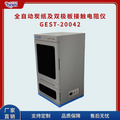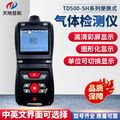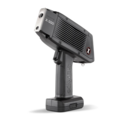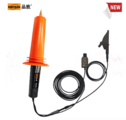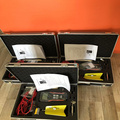单个细胞别的粘附力测定
单细粘附力的测定一直以来都缺乏一种能够在不改变细胞性质的同时测量细胞整体粘附力的设备。现如今FluidFM 技术的出现改变了这一状况。高精密的流体力探针能够在感知压力的同时通过内压而非蛋白结合的方式在不改变细胞性质的同时牢固的抓取细胞,为单细胞粘附力测定提供新的可能。
当今,机械生物学是一个新兴、迅速发展的研究领域,并着重研究细胞力学在细胞功能乃至整个生物体水平上的作用,从而揭示细胞受力对组织、器官发育、生理学以及疾病的起因和进展中所发挥的作用。其中在细胞层面上的研究主要集中在研究细胞之间的粘附力和细胞与基质之间的相互作用。其中细胞与基质的作用往往需要通过细胞表面的整合素受体介导来完成,也是当今的研究重点。目前在细胞-基质相互作用力的研究中已经有诸多方法被建立,其中有诸多测量方法是基于AFM(原子力显微镜)的,因为AFM 能够定量测量细胞-基质之间的粘附力,这也使得AFM 成为了测量细胞间作用力的常用设备。
该类方法主要是利用基质蛋白包被探针并与细胞靠近发生作用并固定在悬臂上,之后通过将细胞与基质进行接触从而通过测量作用过程中悬臂的弯曲程度来实现力学测量。然而这种方法也有其局限性。先为了让细胞能够与悬臂进行粘连,就必须使用凝集素、链霉亲和素或细胞外基质蛋白进行预处理。然而这将无可避免的改变细胞表面细胞的功能状态和表面整合素分布。另外这种方法仅能让细胞与基质接触短的时间,这导致了这种方法只能应用于早期粘附力的测量。此外受制于材料学的限制,适合于固定细胞在探针上并不影响细胞的强力材料仍有待开发。因此使用AFM 测量细胞粘附力的方法仍然需要改进与完善。
而如今Cytosurge 推出的全新的FluidFM 技术给粘附力测量带来了新的希望。这种技术结合了的原子力显微镜探测技术与微流体控制系统。该技术能够直接通过使用中空的原子力探针将细胞通过负压粘附在探针表面,并不需要激活细胞的任何通路信号。这样为粘附力的测量带来了大的优势。一方面,这种方法能够提供远比蛋白结合牢固多的粘附力,能够将细胞牢固的固定在探针上面,因此能够用于直接从基质上分离。而另一方面,由于没有生物处理,这种方法不会改变任何细胞表面的通路,从而能够得到接近细胞原生的数据。本文就如何使用FluidFM 测定细胞粘附力和近期应用案例进行总结。
FluidFM 技术如何测定细胞粘附力?
为了阐述这个问题,本文引用Scientific Reports 在2017 年发表的文献中的方法进行阐述。众所周知,细胞在基质上进行单层培养时,吸附在基质表面时主要会产生两种不同类型的力,一种是细胞与基质之间的粘附力,另一种是细胞与细胞之间的粘附力。因此对于细胞粘附力来说,单个细胞的粘附力就是细胞与基质之间的作用力。而单层细胞的细胞粘附力则是细胞之间相互作用力和细胞基质与细胞之间作用力之和。如下图所示:
因此只要同时测定单个细胞粘附力即可得到细胞与基质之间的相互作用力,而细胞间的相互作用力则可以通过同时测量单层细胞的细胞粘附力和单个细胞的粘附力做差即可得到,如下公式所示:
Force cell-cell ≌ Force Monolayer – Force Indiv.cell
以上即为粘附力的计算方法,为了能够测量粘附力Sancho 等使用FluidFM 技术,通过将探针靠近细胞直到探针与细胞接触,之后开始对探针腔内增加负压从而牢固的吸住细胞。当细胞固定后收回探针并记录这之间的力学变化,如下图所示:
从图中显示出当探针开始靠近细胞后,探针表面开始出现压力变化,如上图中的蓝色区域所示。当出现这种变化后就停止下降探针并开始施加负压。这时候由于腔内负压,探针和细胞之间的结合变得紧密,导致探针被细胞向下拉动,从而产生了上边右图白色区域的力学变化。随后随着探针上升,细胞给以探针的拉力随之增高,并逐渐达到临界,使得细胞脱离基质。这一过程的大值即为细胞粘附力。
之后作者考察了两种性质截然不同的细胞的粘附力。一种是L929 无细胞间作用的细胞,另一种是HUAEC 具有细胞间的相互作用的细胞,结果如下图所示:
结果也证实了粘附力测定公式。具有细胞间作用的HUAEC 在单个细胞和单层细胞之间的粘附力存在差异,而无细胞间相互作用的L929 细胞则没有差异。因此FluidFM 技术能够很好地帮助研究者研究单细胞粘附力的性质。
FluidFM 测定细胞粘附力的应用
随着时间推移,越来越多的学者开始使用FluidFM 技术进行测定细胞粘附力。以下就近五年的具有代表性的应用进行总结。
Cohen 等使用FluidFM 技术对MCF7-MCF10A、MCF7-HS5 的细胞粘附力进行了测定,并与以往的文献进行对比,发现其数据与Hossein 等测定的结果相符。如下图所示:
使用FluidFM 技术对MCF7-MCF10A、MCF7-HS5 细胞粘附力进行测定 a. 使用FluidFM 测定细胞粘附力全过程;b. MCF7-HS5 的细胞粘附力测试结果;c. MCF7-MCF10A 的细胞粘附力测试结果。
Jaatinen 等通过使用FluidFM 技术研究外加电流对C2C12 小鼠成肌细胞粘附力的影响中发现随着外周电流的增加,细胞形态发生改变,与基质接触面积降低。当电流剂量高过11As/m2后细胞形态急剧改变,粘附力等参数发生明显变化,甚至死亡。如下图所示:
FluidFM 测定C2C12 细胞粘附力 a.使用FluidFM 测定粘附力显微镜图;b.施加12.3As/m2电流和空白对照组的粘附力谱线;c.粘附力与电流之间的量效关系图。
Sankaran 等使用FluidFM 来研究共价和非共价的表面整合素受体对细胞粘附力的影响。通过测定发现两者均可有效增加细胞的粘附能力,并且效果近似。
使用FluidFM 技术测定共价键与非共价键之间的整合素受体RGD 之间的区别 a. FluidFM 测定粘附力的示意图; b. 细胞粘附力测定前后显微镜示意图; c.测定粘附力时候的力学曲线图;d. 大粘附力图。
Sancho 等通过FluidFM 技术使用了一种非常有趣的测量方法来测量MSX1 过表达对细胞骨架的影响,他们先将10μm 的小胶球固定在探针上,之后使用探针去压细胞直到探针压力达到2 nN,通过压痕曲线来分析细胞骨架变化。通过对比发现过量表达MSX1 细胞的硬度显著比普通细胞高。如下图所示:
使用FluidFM 技术测定HUAEC 中MSX1 过表达对细胞骨架的影响。a. HUAEC 细胞的免疫荧光染色phalloidin(上)、vimentin(下)(绿色)Hoechst(蓝色);b. HUAEC 细胞的免疫荧光染色phalloidin(红色)、vinculin(绿色)TOPRO-3(蓝色);c. 每个克隆中vinculin 阳性面积;d. 使用FluidFM 技术压细胞的示意图;e. 吸取10μm 珠子;f. 空白细胞下压时的力学谱线;g. MSX 过表达细胞下压时的力学谱线,更深的凹陷和平滑的斜率表示较低的刚度; h.用胶体压痕法测定细胞刚度的测量结果。
总结
细胞粘附力测定在细胞生命科学研究中起着至关重要的作用,然而传统手段中有着各种各样的局限性,这主要原因是缺乏一种有效能够抓取细胞并进行力学测定的手段。现如今FluidFM 技术在细胞粘附力测定中的使用,使得研究者们有了一种能够有效、低损的方式抓取细胞,并配合着原子力显微镜的测量的特性,从而能够真正意义上的做到、无损、快速的测量单细胞粘附力,帮助研究者寻找细胞粘附力与细胞生命发展、肿瘤细胞转移之间的关系。
参考文献
1. Geiger, B., Spatz, J. P. & Bershadsky, A. D. Environmental sensing through focal adhesions. Nat Rev Mol Cell Biol 10, 21–33 (2009).
2. Helenius, J., Heisenberg, C. P., Gaub, H. E. & Muller, D. J. Single-cell force spectroscopy. J Cell Sci 121, 1785–1791 (2008).
3. Wojcikiewicz, E. P., Zhang, X., Chen, A. & Moy, V. T. Contributions of molecular binding events and cellular compliance to the modulation of leukocyte adhesion. J Cell Sci 116, 2531–2539 (2003).
4. Friedrichs, J., Helenius, J. & Muller, D. J. Stimulated single-cell force spectroscopy to quantify cell adhesion receptor crosstalk.Proteomics 10, 1455–1462 (2010).
5. Friedrichs, J. et al. A practical guide to quantify cell adhesion using single-cell force spectroscopy. Methods 60, 169–178 (2013).
6. Taubenberger, A. V., Hutmacher, D. W. & Muller, D. J. Single-cell force spectroscopy, an emerging tool to quantify cell adhesion to biomaterials. Tissue Eng Part B Rev 20, 40–55 (2014).
7. Meister, A. et al. FluidFM: combining atomic force microscopy and nanofluidics in a universal liquid delivery system for single cell applications and beyond. Nano Lett 9, 2501–2507 (2009).
8. Potthoff, E. et al. Rapid and serial quantification of adhesion forces of yeast and Mammalian cells. PLoS One 7, e52712 (2012).
9. Potthoff, E. et al. Toward a rational design of surface textures promoting endothelialization. Nano Lett 14, 1069–1079 (2014).
10. Guillaume-Gentil, O. et al. Force-controlled manipulation of single cells: from AFM to FluidFM. Trends Biotechnol 32, 381–388 (2014).
11. Steinberg, M. S. Reconstruction of tissues by dissociated cells. Science 141, 401–408 (1963).
12. Kumar, S. & Weaver, V. M. Mechanics, malignancy, and metastasis: the force journey of a tumor cell. Cancer Metastasis Rev 28, 113–127 (2009). Scientific Reports | 7:46152 | DOI: 10.1038/srep46152
13. Ryan, P. L., Foty, R. A., Kohn, J. & Steinberg, M. S. Tissue spreading on implantable substrates is a competitive outcome of cell-cell vs. cell-substratum adhesivity. Proc Natl Acad Sci USA 98, 4323–4327 (2001).
14. Shinozawa, T., Yoshikawa, H. Y. & Takebe, T. Reverse engineering liver buds through self-driven condensation and organization towards medical application. Dev Biol 420, 221–229 (2016).
15. Eisenberg, L. M. & Markwald, R. R. Molecular regulation of atrioventricular valvuloseptal morphogenesis. Circ Res 77, 1–6 (1995).
16. Zeisberg, E. M., Potenta, S., Xie, L., Zeisberg, M. & Kalluri, R. Discovery of endothelial to mesenchymal transition as a source for carcinoma-associated fibroblasts. Cancer Res 67, 10123–10128 (2007).
17. Medici, D. et al. Conversion of vascular endothelial cells into multipotent stem-like cells. Nat Med 16, 1400–1406 (2010).
18. Zeisberg, E. M. et al. Endothelial-to-mesenchymal transition contributes to cardiac fibrosis. Nat Med 13, 952–961 (2007).
19. Polacheck, W. J. & Chen, C. S. Measuring cell-generated forces: a guide to the available tools. Nat Methods 13, 415–423 (2016).
20. Kashef, J. & Franz, C. M. Quantitative methods for analyzing cell-cell adhesion in development. Dev Biol 401, 165–174 (2015).
21. Tambe, D. T. et al. Collective cell guidance by cooperative intercellular forces. Nat Mater 10, 469–475 (2011).
22. Das, T. et al. A molecular mechanotransduction pathway regulates collective migration of epithelial cells. Nat Cell Biol 17, 276–287(2015).
23. Kashef, J. & Franz, C. M. Quantitative methods for analyzing cell-cell adhesion in development. Developmental Biology 401, 165–174(2015).
24. Puech, P. H., Poole, K., Knebel, D. & Muller, D. J. A new technical approach to quantify cell-cell adhesion forces by AFM. Ultramicroscopy 106, 637–644 (2006).
25. Winklbauer, R. Cell adhesion strength from cortical tension - an integration of concepts. J Cell Sci 128, 3687–3693 (2015).
26. Huang, R. Y., Guilford, P. & Thiery, J. P. Early events in cell adhesion and polarity during epithelial-mesenchymal transition. J Cell Sci 125, 4417–4422 (2012).
27. Weder, G. et al. The quantification of single cell adhesion on functionalized surfaces for cell sheet engineering. Biomaterials 31, 6436–6443 (2010).
28. Lagendijk, A. K., Yap, A. S. & Hogan, B. M. Endothelial cell-cell adhesion during zebrafish vascular development. Cell Adh Migr 8,136–145 (2014).
29. Weber, G. F., Bjerke, M. A. & DeSimone, D. W. Integrins and cadherins join forces to form adhesive networks. Journal of Cell Science124, 1183–1193 (2011).
30. Owen, G. R., Meredith, D. O., ap Gwynn, I. & Richards, R. G. Focal adhesion quantification - a new assay of material biocompatibility? Review. Eur Cell Mater 9, 85–96, discussion 85–96 (2005).
31. Maddaluno, L. et al. EndMT contributes to the onset and progression of cerebral cavernous malformations. Nature 498, 492–496 (2013).
32. Vandersmissen, I. et al. Endothelial Msx1 transduces hemodynamic changes into an arteriogenic remodeling response. J Cell Biol 210,1239–1256 (2015).
33. Chen, Y. H., Ishii, M., Sucov, H. M. & Maxson, R. E. Jr. Msx1 and Msx2 are required for endothelial-mesenchymal transformation of the atrioventricular cushions and patterning of the atrioventricular myocardium. BMC Dev Biol 8, 75 (2008).
34. Ma, L., Lu, M. F., Schwartz, R. J. & Martin, J. F. Bmp2 is essential for cardiac cushion epithelial-mesenchymal transition and myocardial patterning. Development 132, 5601–5611 (2005).
35. Zeisberg, M. & Neilson, E. G. Biomarkers for epithelial-mesenchymal transitions. J Clin Invest 119, 1429–1437 (2009).
36. Meng, F. & Wu, G. The rejuvenated scenario of epithelial-mesenchymal transition (EMT) and cancer metastasis. Cancer Metastasis Rev 31, 455–467 (2012).
37. Chamberlain, G., Fox, J., Ashton, B. & Middleton, J. Concise review: mesenchymal stem cells: their phenotype, differentiation capacity, immunological features, and potential for homing. Stem Cells 25, 2739–2749 (2007).
38. Medici, D. & Kalluri, R. Endothelial-mesenchymal transition and its contribution to the emergence of stem cell phenotype. Semin Cancer Biol 22, 379–384 (2012).
39. Potenta, S., Zeisberg, E. & Kalluri, R. The role of endothelial-to-mesenchymal transition in cancer progression. Br J Cancer 99, 1375–1379 (2008).
40. Lamouille, S., Xu, J. & Derynck, R. Molecular mechanisms of epithelial-mesenchymal transition. Nat Rev Mol Cell Biol 15, 178–196(2014).
41. Zebda, N., Dubrovskyi, O. & Birukov, K. G. Focal Adhesion Kinase Regulation of Mechanotransduction and its Impact on Endothelial Cell Functions. Microvascular Research 83, 71–81 (2012).
42. Briscoe, B. J., Sebastian, K. S. & Adams, M. J. The Effect of Indenter Geometry on the Elastic Response to Indentation. Journal of Physics D-Applied Physics 27, 1156–1162 (1994).
43. Mahaffy, R. E., Park, S., Gerde, E., Kas, J. & Shih, C. K. Quantitative analysis of the viscoelastic properties of thin regions of fibroblasts using atomic force microscopy. Biophysical J 86, 1777–1793 (2004).
44. Li, Q. S., Lee, G. Y., Ong, C. N. & Lim, C. T. AFM indentation study of breast cancer cells. Biochem Biophys Res Commun 374, 609–613 (2008).
45. Nelson, C. M., Pirone, D. M., Tan, J. L. & Chen, C. S. Vascular endothelial-cadherin regulates cytoskeletal tension, cell spreading, and focal adhesions stimulating RhoA. Molecular Biology of the Cell 15, 2943–2953 (2004).
46. Yilmaz, M. & Christofori, G. EMT, the cytoskeleton, and cancer cell invasion. Cancer Metastasis Rev 28, 15–33 (2009).
47. Savagner, P. Leaving the neighborhood: molecular mechanisms involved during epithelial-mesenchymal transition. Bioessays 23, 912–923 (2001).
48. Lamouille, S., Xu, J. & Derynck, R. Molecular mechanisms of epithelial-mesenchymal transition. Nature Reviews Molecular Cell Biology 15, 178–196 (2014).
49. Thoelking, G. et al. Nanotopography follows force in TGF-beta1 stimulated epithelium. Nanotechnology 21, 265102 (2010).
50. Buckley, S. T., Medina, C., Davies, A. M. & Ehrhardt, C. Cytoskeletal re-arrangement in TGF-beta1-induced alveolar epithelialmesenchymal transition studied by atomic force microscopy and high-content analysis. Nanomedicine 8, 355–364 (2012).
51. Osborne, L. D. et al. TGF-beta regulates LARG and GEF-H1 during EMT to affect stiffening response to force and cell invasion.Molecular Biology of the Cell 25, 3528–3540 (2014).
52. Gasparics, A., Rosivall, L., Krizbai, I. A. & Sebe, A. When the endothelium scores an own goal: endothelial cells actively augment metastatic extravasation through endothelial-mesenchymal transition. Am J Physiol Heart Circ Physiol 310, H1055–1063 (2016).
53. Sader, J. E., Larson, I., Mulvaney, P. & White, L. R. Method for the Calibration of Atomic-Force Microscope Cantilevers. Review ofScientific Instruments 66, 3789–3798 (1995).
54. Dorig, P. et al. Exchangeable colloidal AFM probes for the quantification of irreversible and long-term interactions. Biophys J 105,463–472 (2013).
55. Radmacher, M., Fritz, M. & Hansma, P. K. Imaging soft samples with the atomic force microscope: gelatin in water and propanol. Biophys J 69, 264–270 (1995).
56. Darling, E. M., Topel, M., Zauscher, S., Vail, T. P. & Guilak, F. Viscoelastic properties of human mesenchymally-derived stem cells and primary osteoblasts, chondrocytes, and adipocytes. J Biomech 41, 454–464 (2008).
57. Guo, S. L. & Akhremitchev, B. B. Packing density and structural heterogeneity of insulin amyloid fibrils measured by AFM nanoindentation. Biomacromolecules 7, 1630–1636 (2006).
58. Siamantouras, E., Hills, C. E., Younis, M. Y. G., Squires, P. E. & Liu, K.-K. Quantitative investigation of calcimimetic R568 on beta cell adhesion and mechanics using AFM single-cell force spectroscopy. Febs Letters 588, 1178–1183 (2014).




